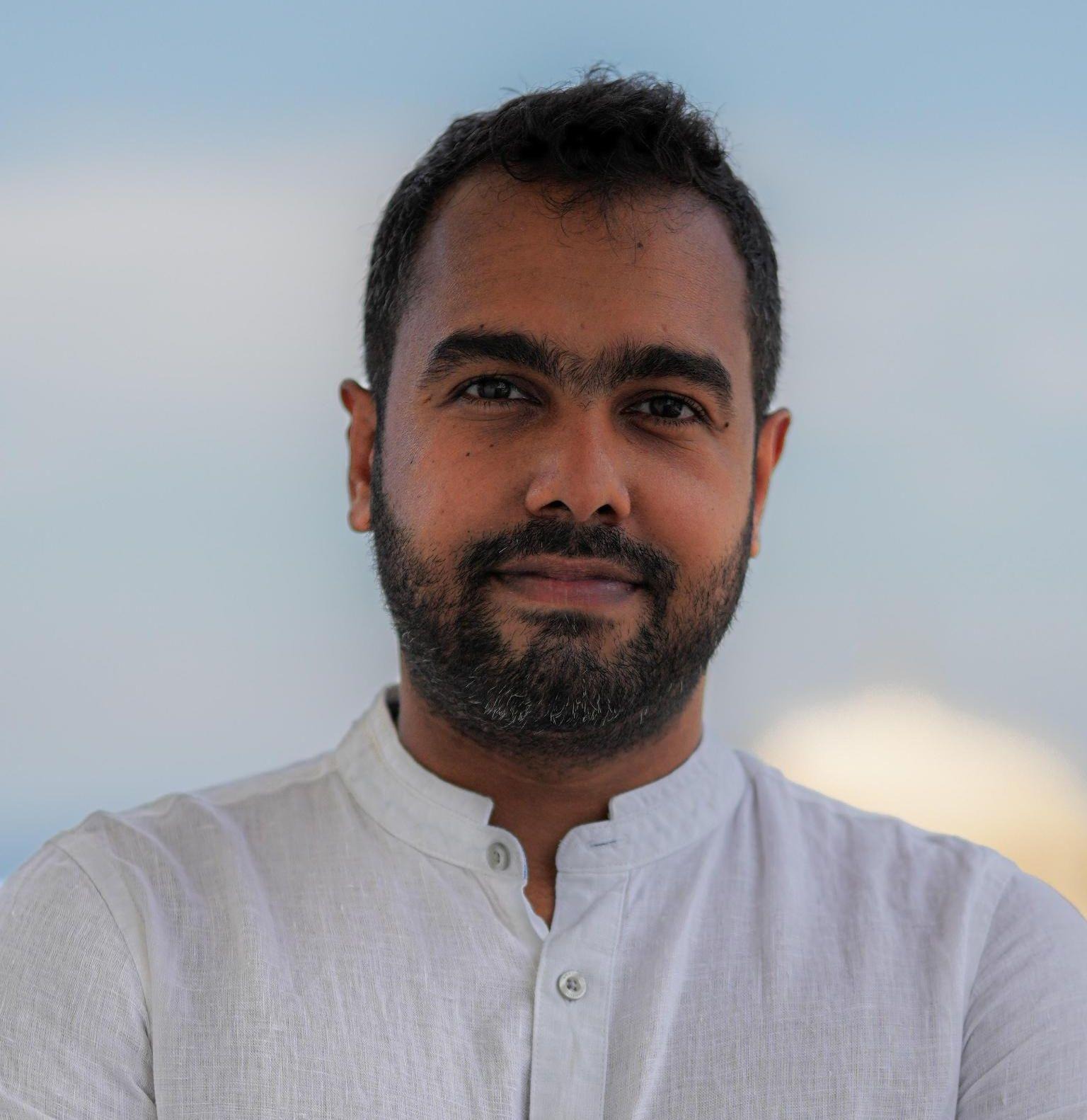Amalinda Gamage
Publications | Talks | Teaching | Service
Hello, I'm Amalinda from Sri Lanka 🇱🇰. ආයුබෝවන්! (āyubōwan!)— a warm wish for a long and prosperous life in Sinhalese.
I'm a Research Fellow with NUS advised by Prof. Ambuj Varshney. Central to my research is spectral optimization, specifically in the implementation of physical layer techniques that enhance the coexistence & fairness of LPWANs. I also have a keen interest in all things RF—particularly unconventional low-power transceivers, which I believe will be essential to power the next billion IoT devices.
My work LMAC has been adopted as an industry standard by the LoRa Alliance. It marks the first industry-academia collaboration of the LoRa Alliance to be recognized as a technical recommendation— a collaboration between Semtech, France (patent holder of LoRa), and NTU, SG. Since LMAC is now integrated to the official LoRaWAN library and enabled by default, it will live inside millions of LoRaWAN devices worldwide. For these contributions, I was named one of 2023 Honorees of the LoRa Alliance Contribution Award at LoRaWAN Live'24, shared by contributors who advanced the LoRaWAN standard globally.
I earned a Ph.D. degree in Computer Science from NTU, SG and my Bachelor's degree in Electronic Engineering with a first-class honors from SHU, UK. I learned the ABCs of research and much more from Prof. Mo Li, my PhD mentor. Prior to joining NTU, I was a lecturer at both SLIIT and UNIVOTEC in Sri Lanka. I am also an elected member of The Institution of Engineers Singapore (IES), a signatory of The Washington Accord.
News
[JUN'24]Named a 2023 Honoree of the LoRa Alliance Contribution Award.[JAN'24]Spoke about "Minimizing on Air Collisions" at LoRa Alliance webinar series. Watch.[OCT'23]LMAC now included in official LoRaWAN implementation and Radiolib.[Jun'23]LMAC voted by the members of LoRa Alliance to be a part of LoRaWAN standard.
Further back in time..
[MMM'21]CSMA Task Force initiated by the LoRa Alliance to integrate LMAC.
Publications & Standards
[Industry Standard] TR-013: Enabling CSMA for LoRaWAN {view pdf}
Amalinda Gamage+, Geofforoy de Guillebon++, Mo Li+, Miguel Luis++, Olivier Seller++,
++Semtech, France, +NTU, SG, in LoRa Alliance Technical Recommendations.
[SUMMARY] My Ph.D. work, LMAC, enabling CSMA for LoRa, is now an industry standard. In 2022, LMAC was proposed to the LoRa Alliance and the CSMA Task Force (CSMA-TF) was established. Members of CSMA-TF worked closely to develop optimal methods to enable CSMA for LoRaWAN through simulations, experiments while sharing expertise. Modifications were made to LMAC, such as the removal of interligent channel hopping to ensure global regulatory compliance. Subsequently, the CSMA-TF presented TR-013 to the LoRa Alliance Technical Committee. It was voted on and accepted by the TC members in June 2023 and thereafter became part of the LoRaWAN standard. This marks the first industry-academia collaboration of the LoRa Alliance that resulted in a Technical Recommendation— a collaboration between Semtech and NTU. For this collaboration, my PhD mentor (Prof. Mo Li) and I were recognized as 2023 Honorees of LoRa Alliance Contribution Award cohort at LoRaWAN Live'24 in Germany by the LoRa Alliance (PR).
Since January 2024, TR-013 has been integrated to the official LoRaWAN library and enabled by default. Consequently, LMAC is now lives embedded in millions of LoRaWAN devices. Thank you Semtech and LoRa Alliance for this wonderful collaboration!
CSMA for LoRaWAN webinar.
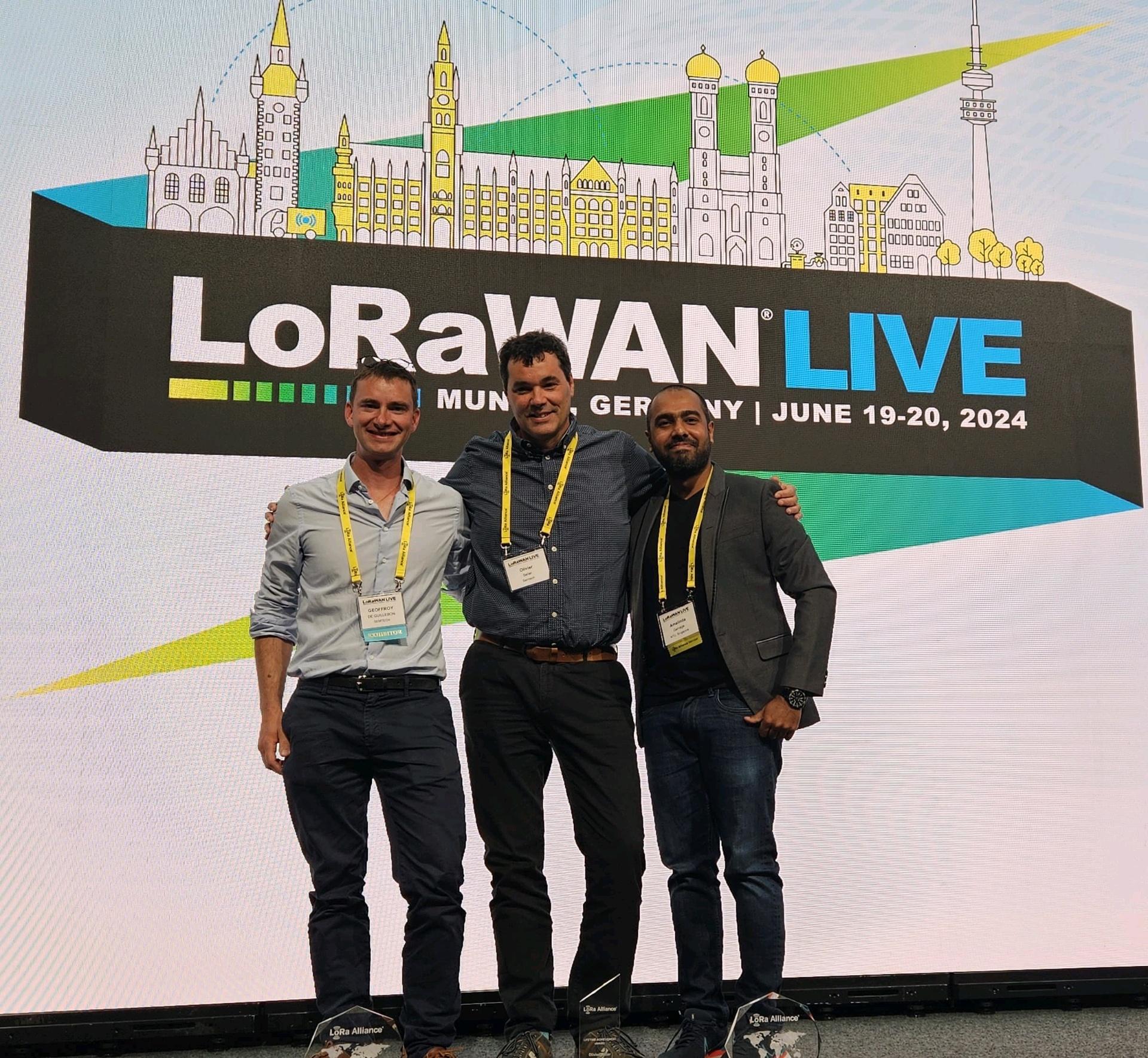
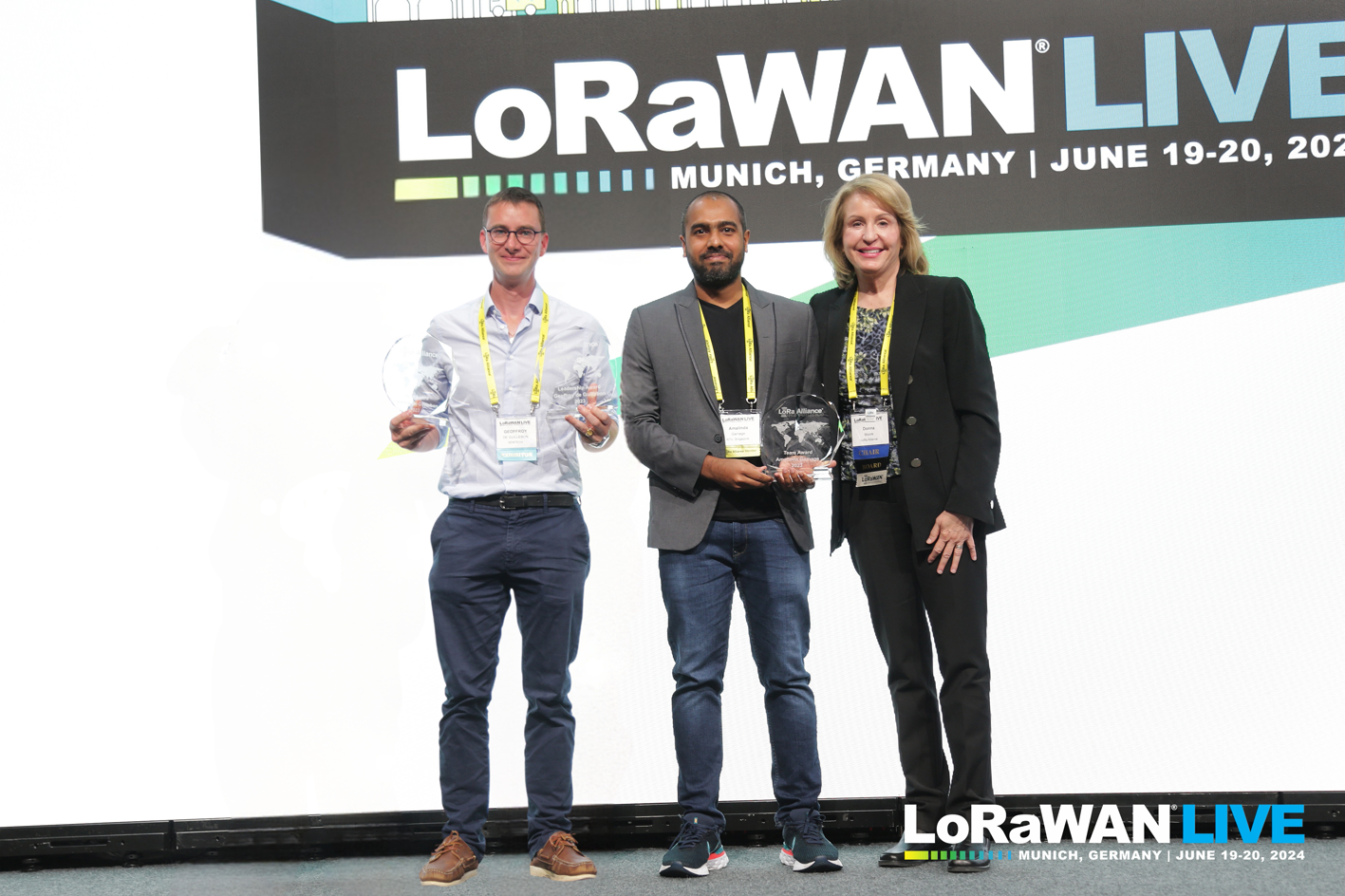
[MobiCom'24] SateRIoT: High-performance Ground-Space Networking for Rural IoT {view pdf}
Yidong Ren1, Amalinda Gamage3, Li Liu1, Mo Li2,3, Shigang Chen4, Younsuk Dong1, Zhichao Cao1
1MSU, USA 2HKUST, HK 3NTU, SG 4UF, USA in ACM MobiCom, Washington, D.C., USA.
[SUMMARY] SateRIoT enables reliable IoT connectivity in rural areas by complementing satellite communication with LoRa. It experimentally demonstrates the temporal and spatial challenges of satellite links and effectively mitigates their impact on network performance through a bursty link model and a multi-hop flooding protocol. SateRIoT significantly improves overall network energy efficiency and latency, and it is implemented using cost-effective COTS hardware.
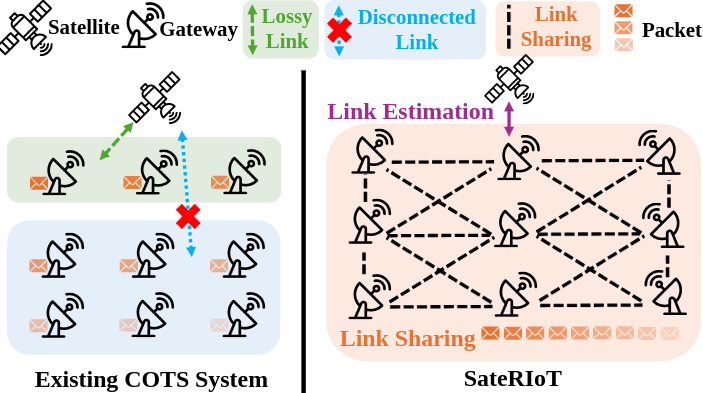
[MobiCom'20] LMAC: Efficient Carrier-Sense Multiple Access for LoRa {view pdf}
Amalinda Gamage1, Jansen Christian Liando1, Chaojie Gu1, Rui Tan1, Mo Li1
1NTU, SG, in ACM MobiCom, London, UK.
[SUMMARY] This work implements collision avoidance across large-scale LoRa networks. CSMA is a technique used by many wireless protocols to avoid collisions. However, LoRa modulation is unique. A single LoRa channel can accommodate multiple frames simultaneously. LoRa frames also have the ability to traverse underneath the noise floor. Therefore, we need a CSMA protocol that doesn't debilitate LoRa's key advantages. LMAC is a simple protocol that does just that reliably with an extremely small energy overhead.
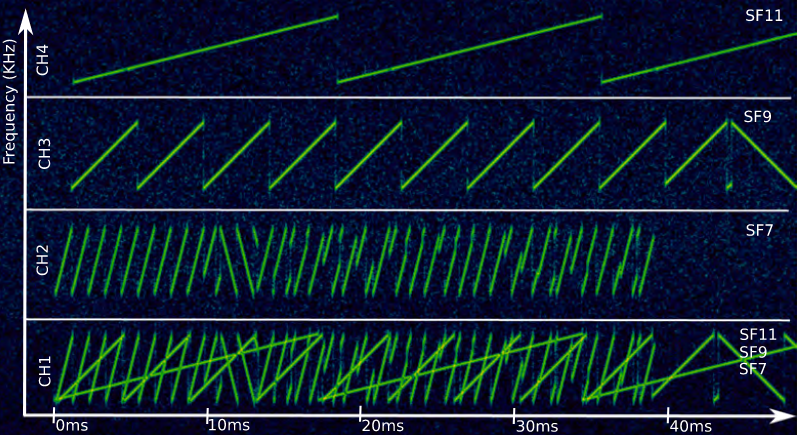
A video spectrogram of LMAC vs ALOHA showcasing how much more disciplined the spectrum is under LMAC-2 under the same network demand.
[TOSN'23] [SenSys'23] LMAC: Efficient Carrier-Sense Multiple Access for LoRa {view pdf}
Amalinda Gamage1, Jansen Christian Liando1, Chaojie Gu1, Rui Tan1, Mo Li1, Olivier Seller2
1NTU, SG 2Semtech, FR in ACM TOSN.
[Was also invited to be presented at SenSys'23] {SenSys Proceedings}
[SUMMARY] This work extends LMAC, originally published in MobiCom '20. The extension examines several additional aspects of LoRa CSMA, such as quantifying the limitations of RSS-LBT, how LMAC enhances weak LoRa transmissions, the impact of gradual adoption and coexistence of CSMA-enabled LoRa alongside ALOHA, details about global regulatory implications, and finally, how to comply.
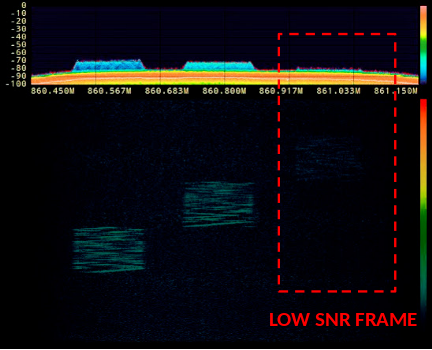
[ECRTS'25] LoRaHART: Hardware-Aware Real-Time Scheduling for LoRa {view pdf}
Soumya Ranjan Sahoo1, Amalinda Gamage2, Niraj Kumar3, Arvind Easwaran1
1NTU, SG 2NUS, SG 3IIT Goa, IN in IEEE ECRTS.
[SUMMARY] Prior works on real-time LoRa assume gateway capabilities that don’t scale well in practice, such as full-duplex operation or unlimited concurrent demodulation. This makes real-life deployment impractical. We designed LoRaHART from the ground up to work within the hardware limits of LoRa gateways. It accounts for two key constraints: the half-duplex nature of COTS gateways and their ability to demodulate at most eight frames concurrently. At the core, LoRaHART uses a TDMA scheduler with CSMA-based retransmissions when necessary,within a single superframe. On a 40-node COTS testbed, it achieves 98% PRR and 45% higher spectral efficiency than the best baseline.

[TOSN'19] Known and Unknown Facts of LoRa: Experiences from a Large Scale Measurement Study {view pdf}
Jansen Christian Liando1, Amalinda Gamage1, Agustinus Tengourtius1, Mo Li1
1NTU, SG in ACM TOSN.
[SUMMARY] We experimentally evaluate LoRa’s real-world performance using over 50 nodes across a 3×3 km testbed. LoRa can exceed 10 km under line-of-sight, but its range drops drastically in urban and indoor environments—by as much as 90%. We show that achieving long battery life requires tight parameter tuning; naïve configurations can cut node lifetime down to an year. We measure power profiles and derive lifetime models using real hardware and power measurement traces. We also profile the capacity of a real SX1301-based gateway and estimate the limits of its concurrency. Surprisingly, we find that using higher spreading factors (like SF12) supports more nodes in terms of PRR, due to lower collision rates, despite slower throughput. We then propose a simple algorithm to jointly optimize node lifetime and coverage. Finally, we highlight how LoRaWAN could add energy overhead and that it doesn’t always improve goodput, especially when downlinks are enabled.
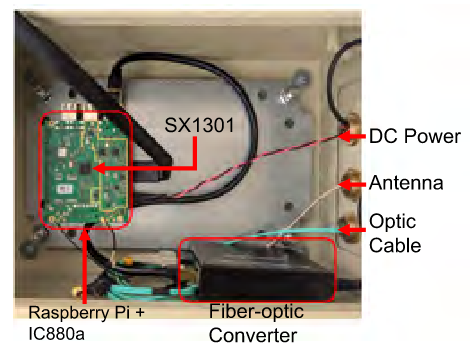
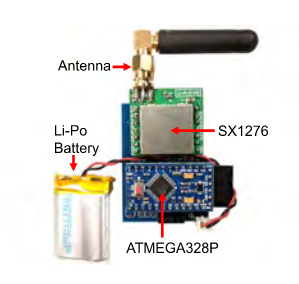
[GLOBECOM'16] JumboNet: Design of a Kinetic Energy Harvester for Elephant Mounted Wireless Sensor Nodes.
Malitha Wijesundara1, Cristiano Tapparello2, Amalinda Gamage1, Yadhavan Gokulan1, Logan Gittelson2, Thomas Howard2, Wendi Heinzelman2
1NTU, SG 2Univ. of Rochester, USA.
{
view PDF
}
[SUMMARY] We designed a kinetic energy harvester to power GPS tags on elephants using their natural movement. The device uses magnetic levitation and ferrofluid bearings to reduce friction and boost energy output. We collected 10 days of real acceleration data from an Asian elephant and tuned the system accordingly. The harvester generates ~89 J per day—enough to transmit location 24 times daily over 114 km line-of-sight, with ~35 J surplus. This surplus can support higher update rates or fallback options like GPRS. The results show that long-term, maintenance-free tracking of wild elephants is feasible, which is critical as human-elephant conflict zones expand.


Service
[Kindly send review requests strictly to manuscriptcentral ID [email protected]]
- TPC, IEEE ICPADS, 2024.
- Reviewer for ACM Transactions on Sensor Networks (TOSN), 2022—
- Reviewer for ACM Transactions on Networking (TON), 2021—
- Reviewer for ACM Transactions on Internet of Things (TIOT), 2021—
- Reviewer for IEEE Transactions on Industrial Informatics, 2025—
- Reviewer for IEEE Transactions on Mobile Computing, 2023—
- Reviewer for IEEE Internet of Things Magazine, 2023—
- Reviewer for IEEE Internet of Things Journal (IEEE IOTJ), 2022—
- Reviewer for IEEE Communications Letters, 2022—
- Reviewer for IEEE Transactions on Mobile Computing (IEEE TMC), 2025—
Talks
- LoRaWAN CSMA to Minimize on Air Collisions, LoRa Alliance LoRaWAN Webinar Series, Jan 2024. Register
- LMAC: Efficient Carrier-Sense Multiple Access for LoRa ACM Sensys, Nov 2023.
- On the Applicability of Kinetic Energy Harvesting for Real Time Monitoring of Wild Elephants at SLIIT Research Seminar Series, Aug 2017.
Teaching
- Guest Lecture: Understanding LoRa: Fundamentals and Scaling to a Billion-Device Future,
[CS5272 - Embedded Software Programming], National University of Singapore, March 2025. - AY 2020:
- Teaching Assistant for
[CE3005: Computer Networks, CZ3006: Netcentric Computing], Nanyang Technological University.
- Teaching Assistant for
- AY 2019:
- Teaching Assistant for
[CE3005: Computer Networks, CZ3006: Netcentric Computing], Nanyang Technological University.
- Teaching Assistant for
- AY 2017:
- Assistant Lecturer for
[EC300: Embedded Systems Engineering], Sri Lanka Institute of Information Technology. - Assistant Lecturer for
[IT448: Hardware Security], Sri Lanka Institute of Information Technology. - Visiting Lecturer for
[EE60303: Microprocessor Based Systems], University of Vocational Technology.
- Assistant Lecturer for
Further back in time..
- AY 2016:
- Visiting Lecturer for
[EE60303: Microprocessor Based Systems], University of Vocational Technology. - Teaching Assistant for
[EC300: Embedded Systems Engineering], Sri Lanka Institute of Information Technology.
- Visiting Lecturer for
- AY 2015:
- Teaching Assistant for
[EC300: Embedded Systems Engineering], Sri Lanka Institute of Information Technology.
- Teaching Assistant for
- AY 2014:
- Teaching Assistant for
[EC300: Embedded Systems Engineering], Sri Lanka Institute of Information Technology.
- Teaching Assistant for
Miscellaneous
My Diet:
My diet follows veganism. List of fancy vegan spots in Singapore [1, 2].
My Approach to Computing:
I prefer the use of free software which follow a particular philosophy and promises particular freedoms.
PGP support for email
I welcome PGP-encrypted emails; you can use my pgp key with the email mentioned at the top.
Web Template
This website is based off the design by Prof.Pat Pannuto.
